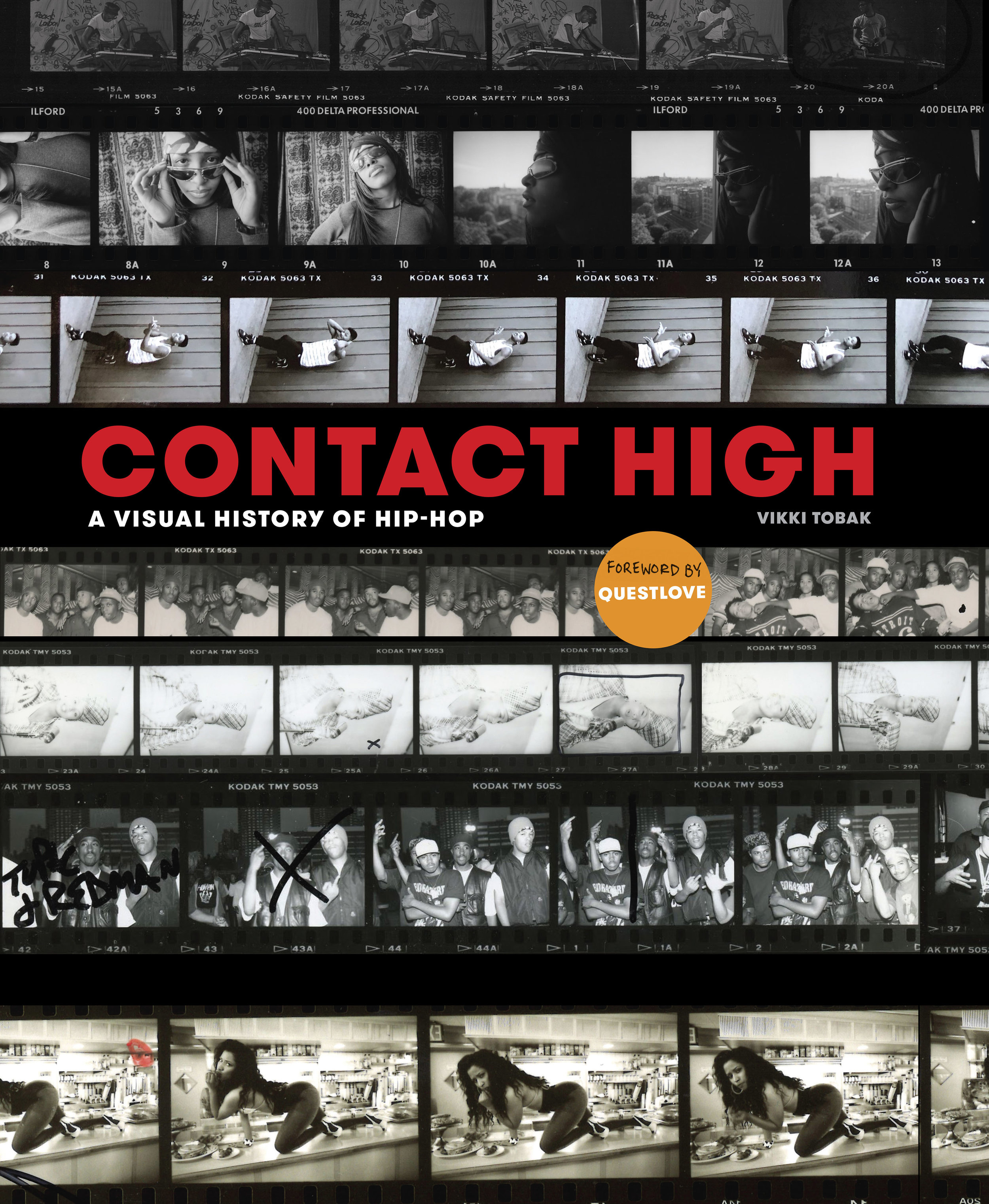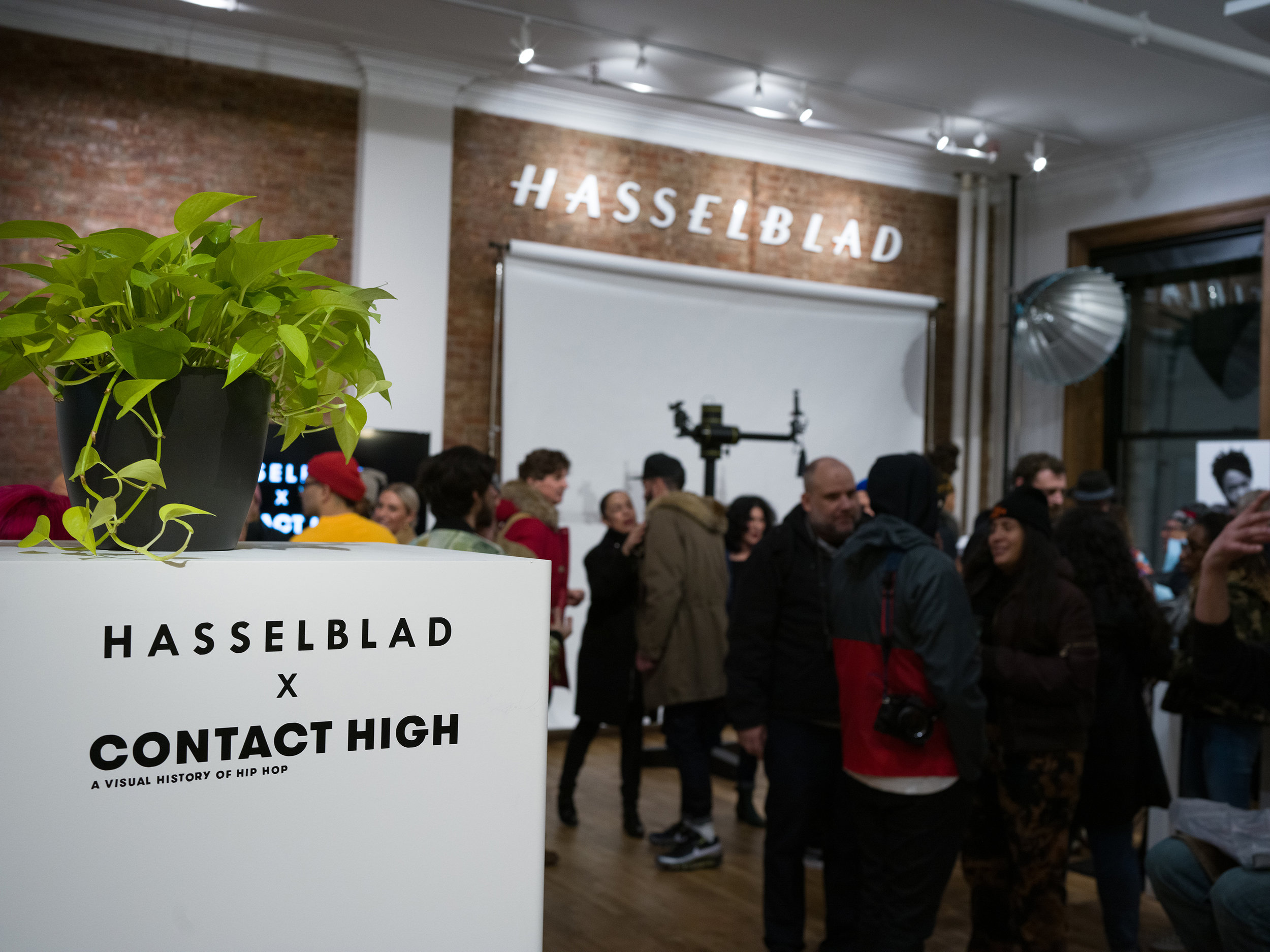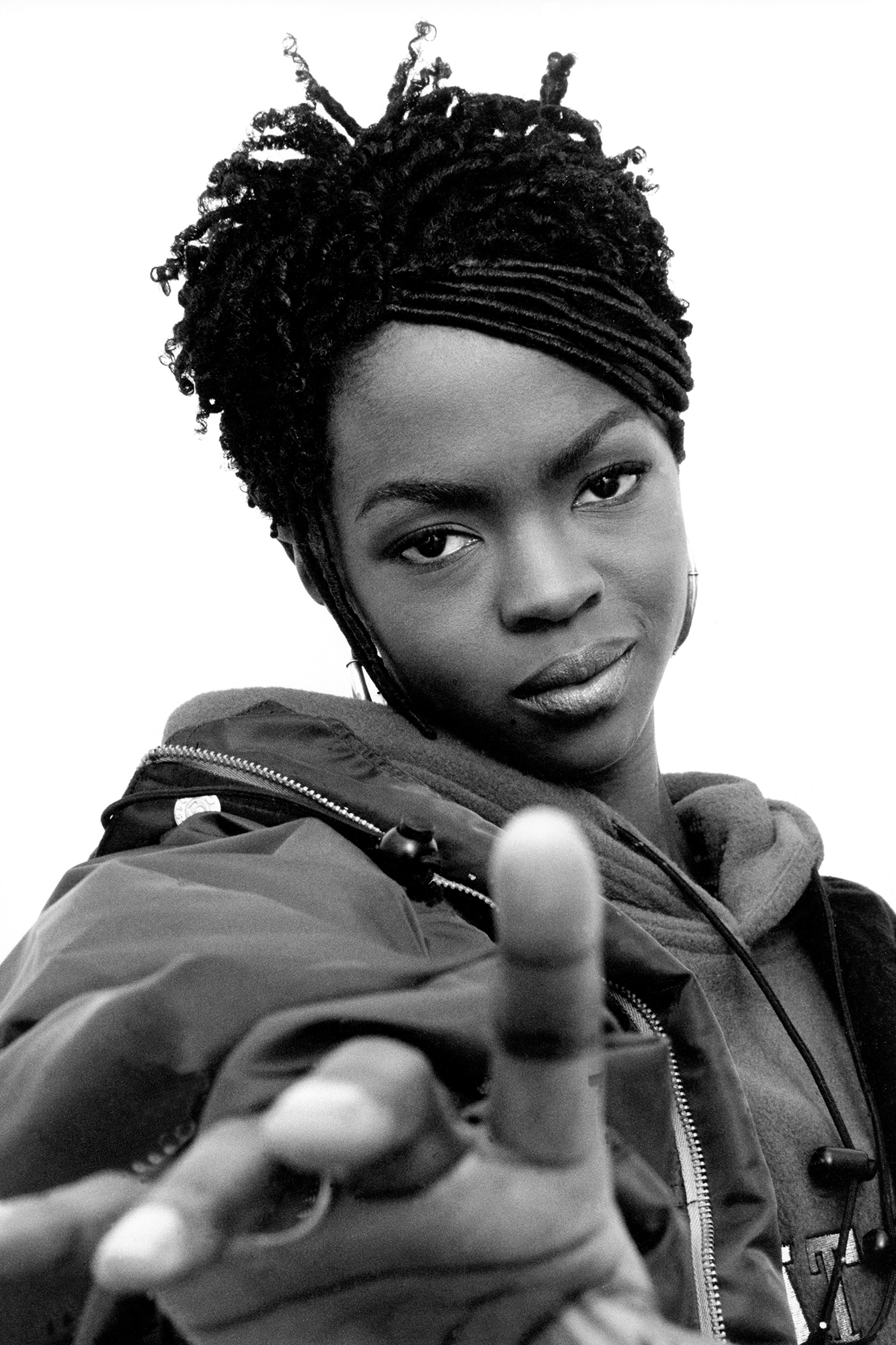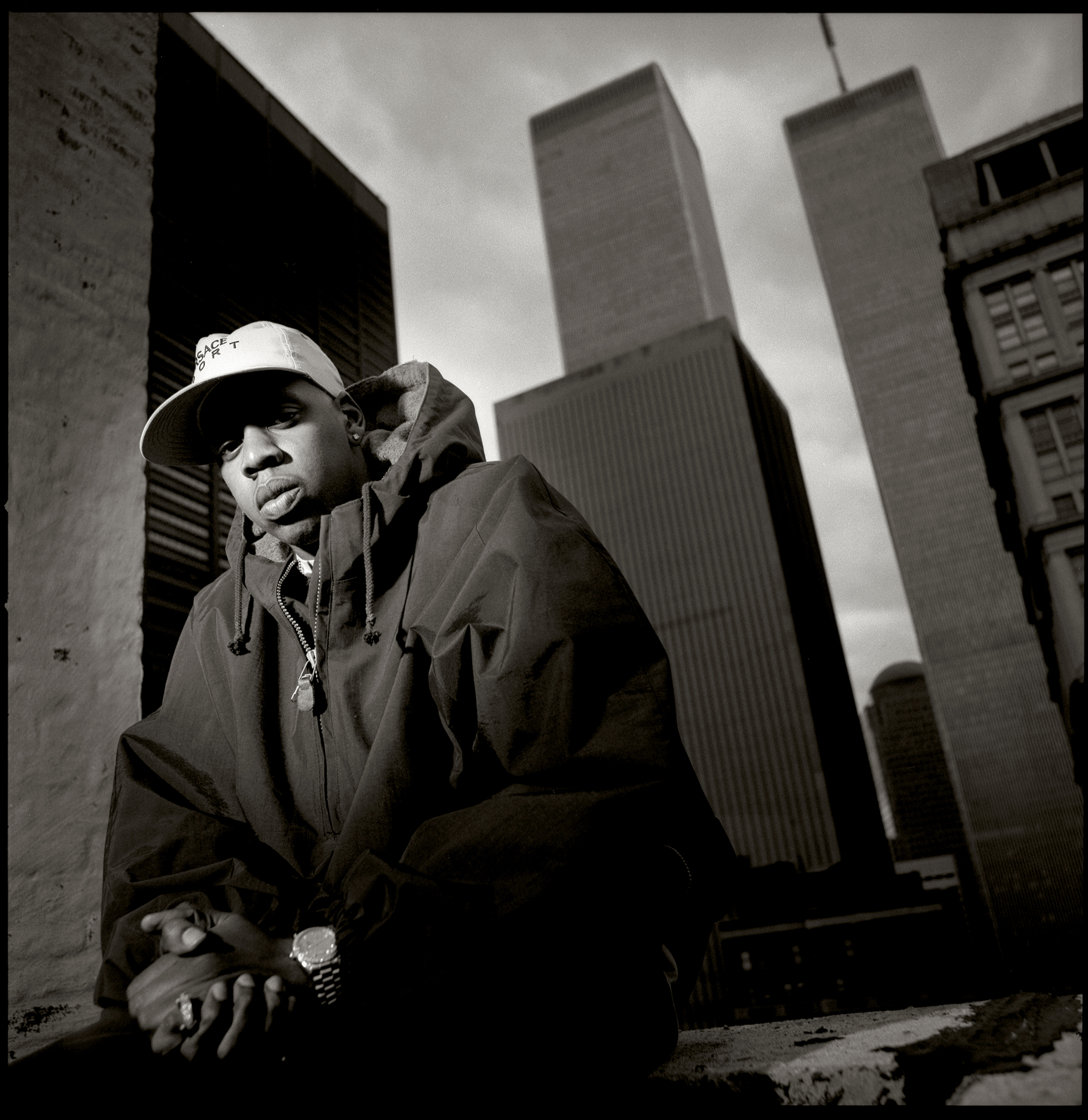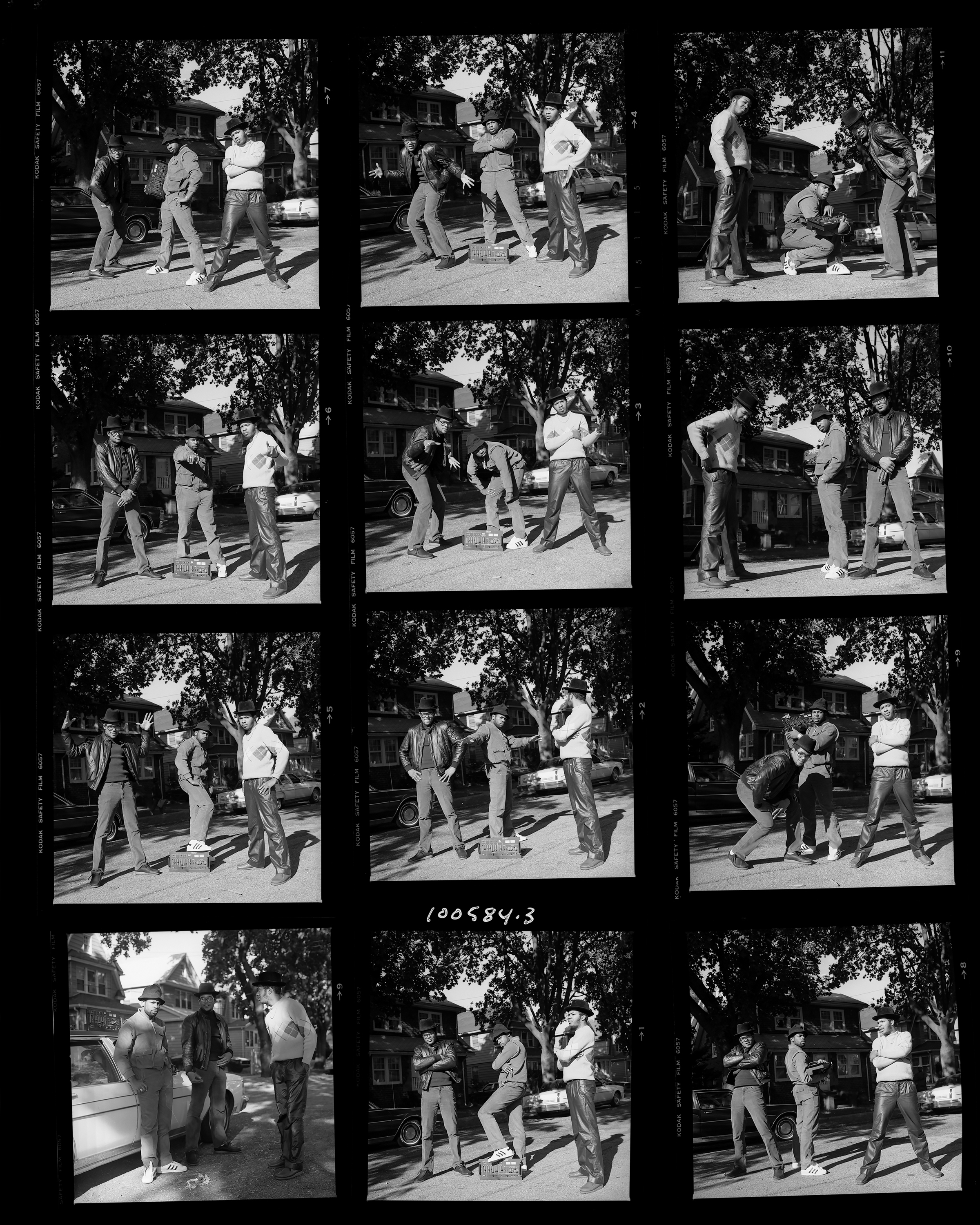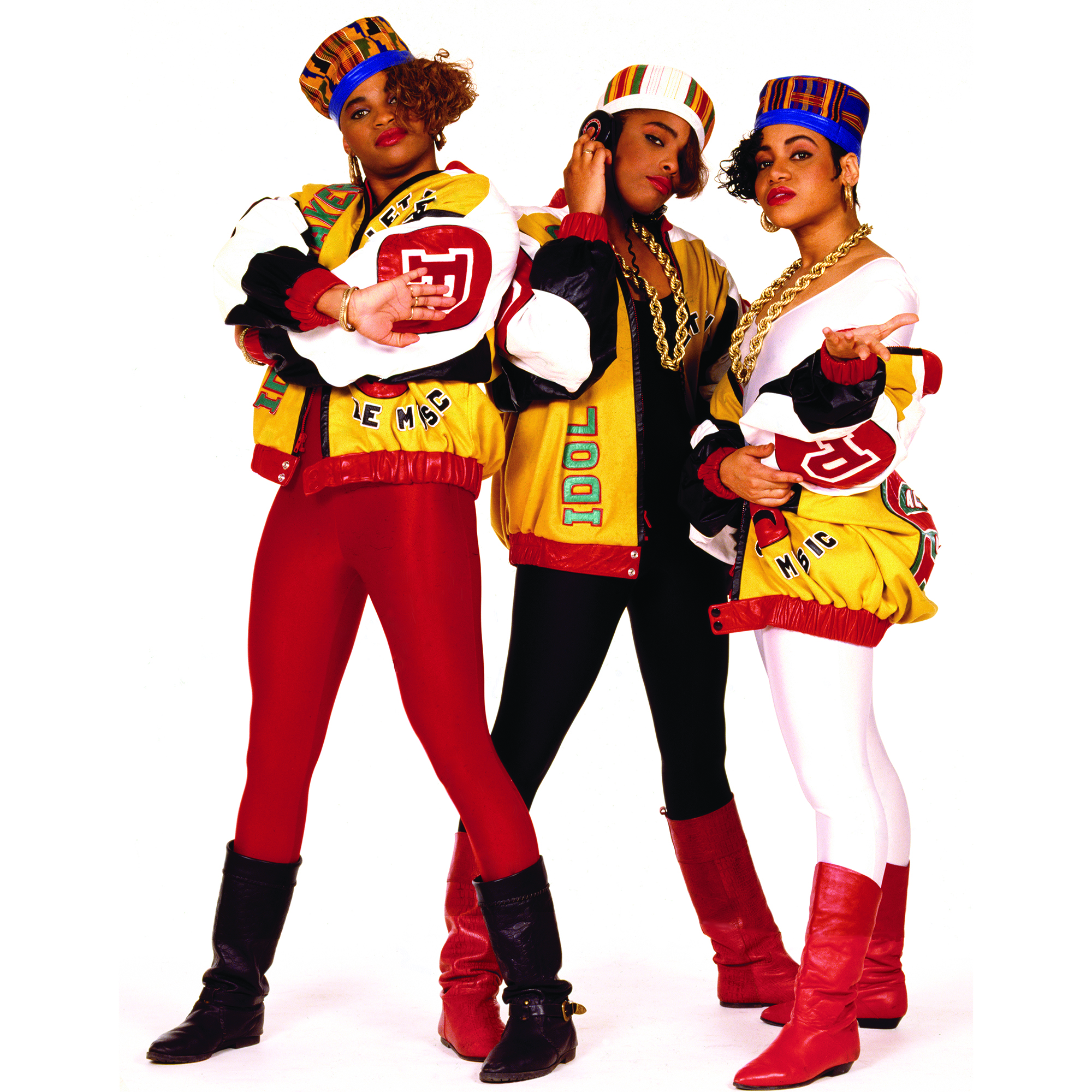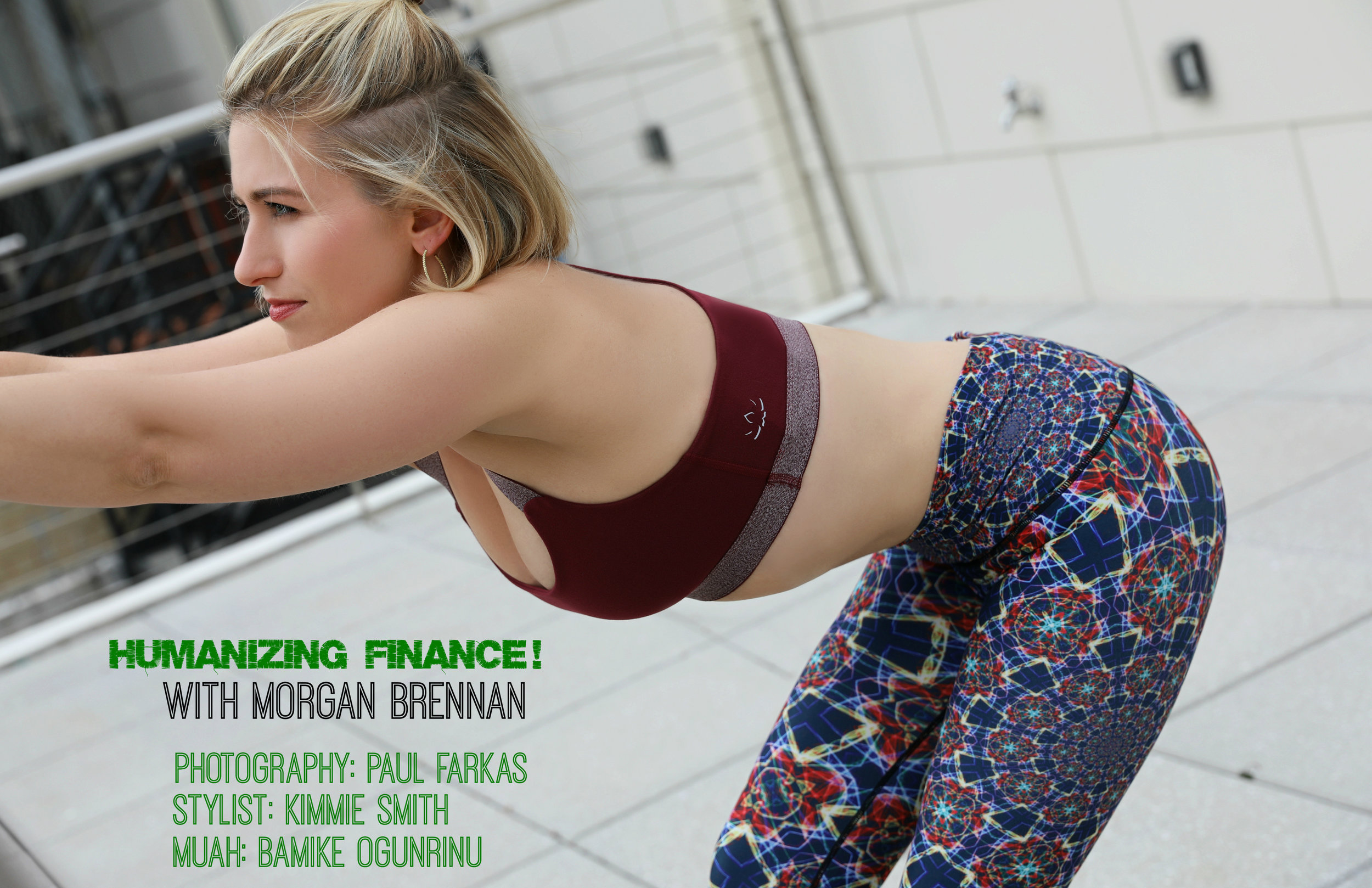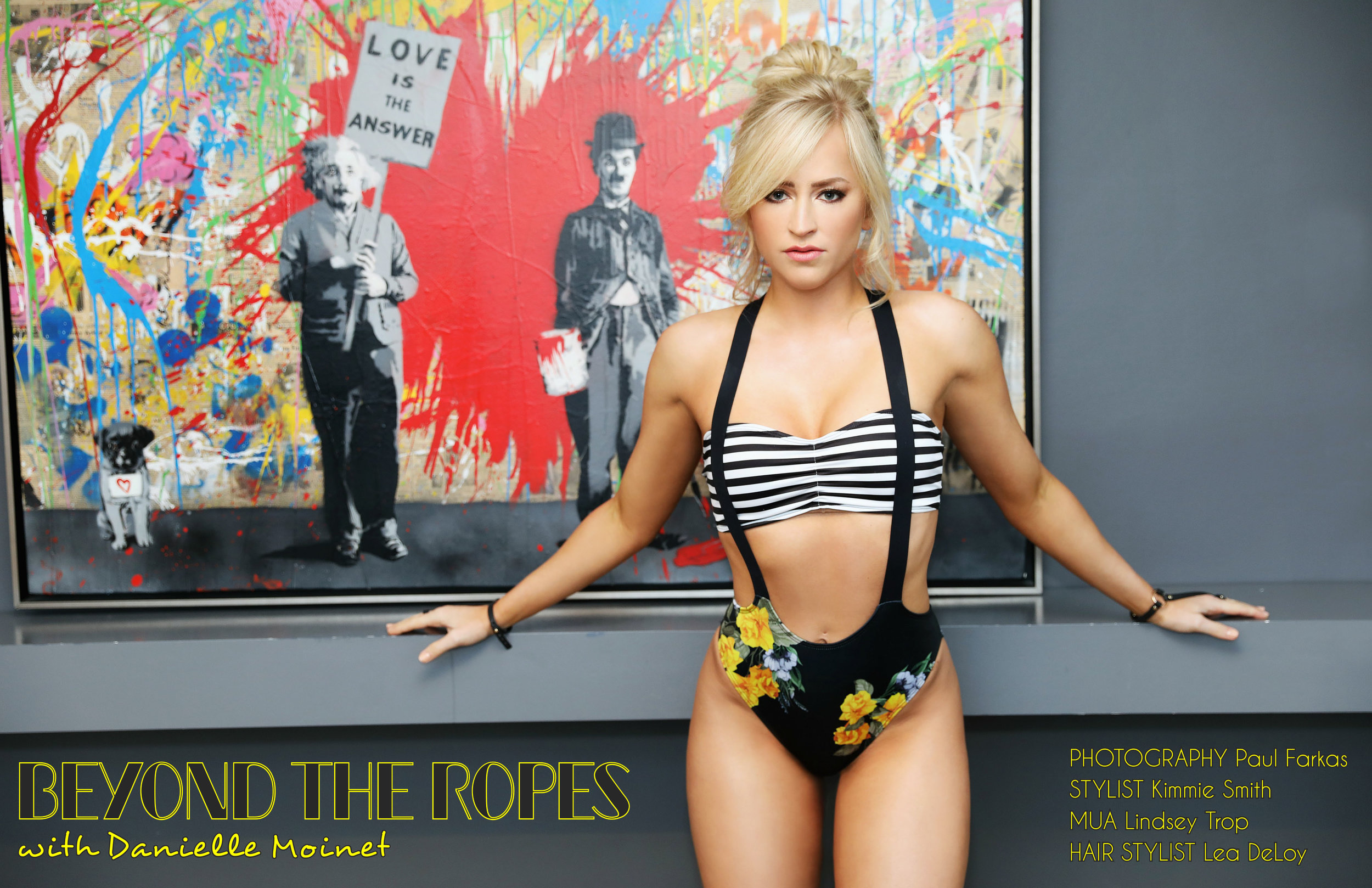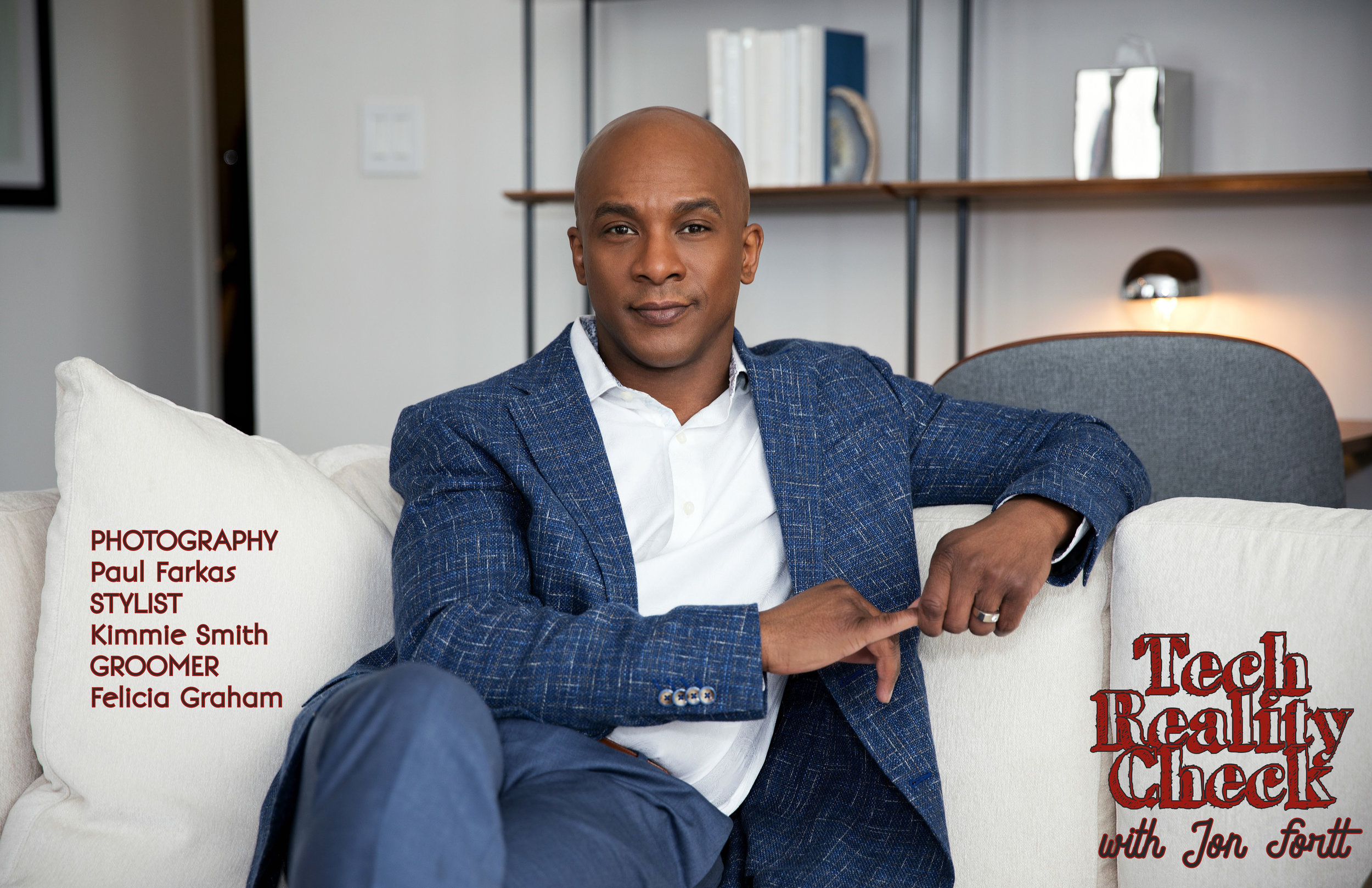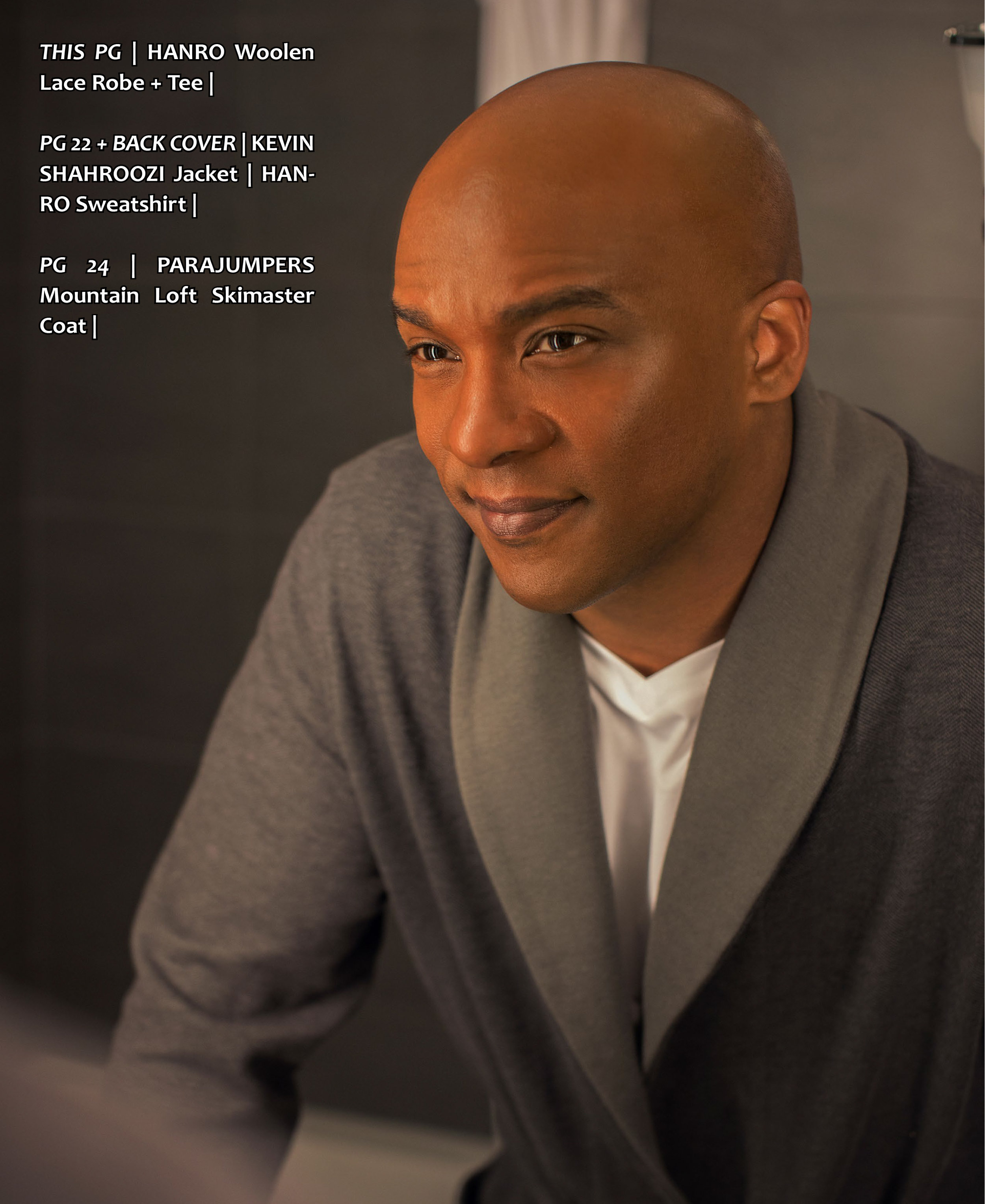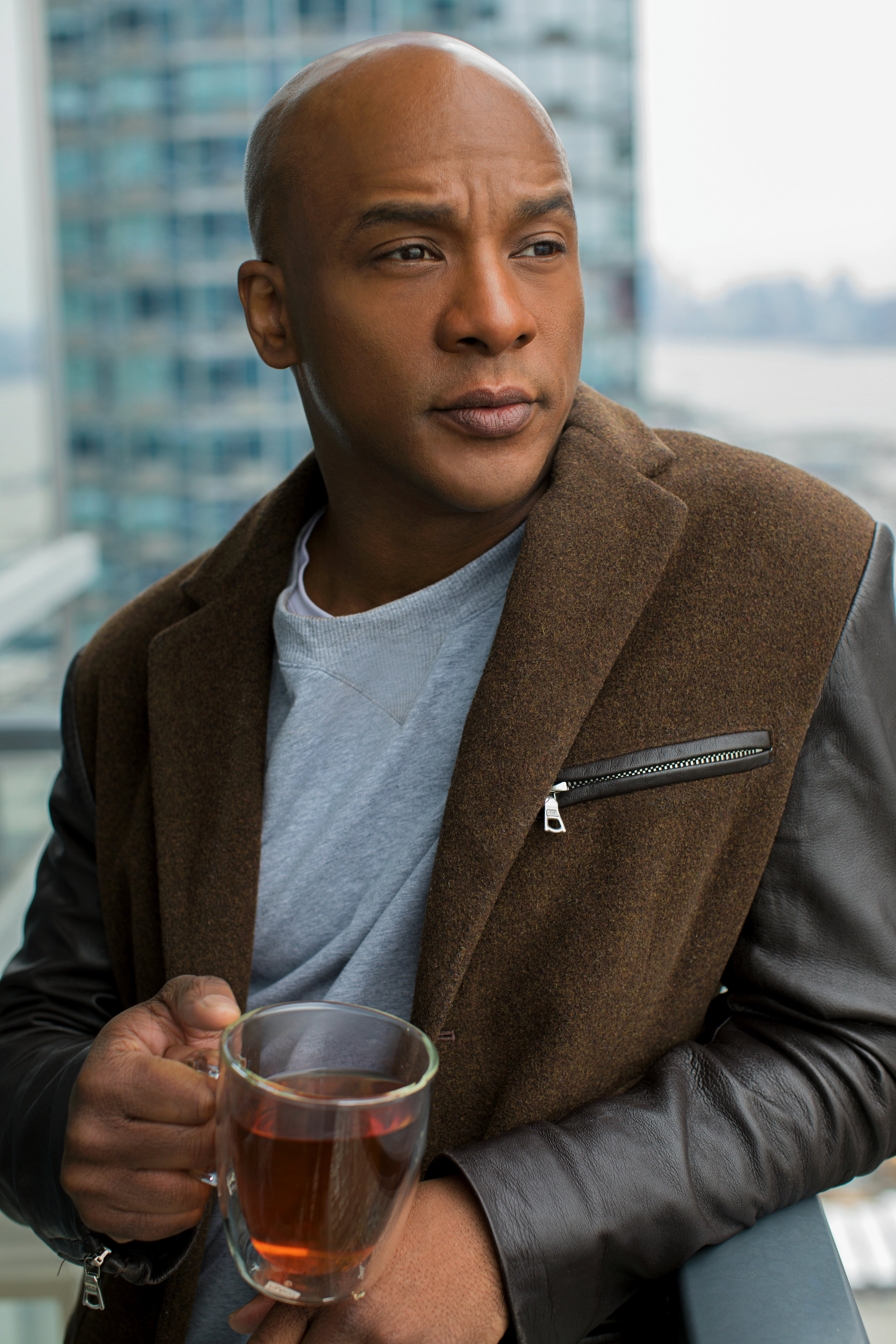We enjoyed Contact High, a Visual History of HipHop: Pop Up Experience at the Hasselblad NY Experience Studio in Soho. The exhibition celebrated the recently published book Contact High: A Visual History of Hip Hop by Vikki Tobak, documenting the history and progression of Hiphop and some of its key influencers over a 40 year span.
Curated by Vikki Tobak, based on the bestselling book of the same name, and with creative direction by Fab 5 Freddy and forward by Questlove, it includes works from 60 photographers forming a chronological journey from old-school to alternative hip-hop. The ultimate companion for music and photography enthusiasts, Contact High is the definitive history of hip-hop’s early days, celebrating the artists that shaped the iconic album covers, t-shirts and posters beloved by hip-hop fans today.
On display at the pop up experience were images made with various Hasselblad cameras from Janette Beckman, Danny Clinch, Armen Djerrahian, George Dubose, Jamil GS, Danny Hastings and Jayson Keeling.
Founded in 1941, Hasselblad is the leading manufacturer of medium format cameras and lenses. Made in Sweden, Hasselblad cameras are renowned for their iconic ergonomic design, uncompromising image quality and Swedish craftsmanship. For over half a century, Hasselblad cameras have captured some of the world’s most iconic images – including the first landing on the moon - and helped shape the way we look at the world through genuine photographic artistry. Trusted by NASA and used by the greatest photographers in the world, Hasselblad continues to create products with uncompromising image quality that inspire. In 2016, Hasselblad introduced the world’s first compact mirrorless digital medium format camera – the X1D.
ATHLEISURE MAG: We loved seeing the contact sheets presented in the book at Hasselblad's pop-up experience exhibit. When did you come up with the concept for the book and how long was the process making it?
VIKKI TOBAK: The whole process took about three years for me to write and research the book, but the idea came from me actually working in the music business in the early ’90s. I worked for an indie Hiphop label called Payday Records and Empire Management and worked with a lot of young Hiphop artists. I would coordinate a lot of their photo shoots, so I also met all these young photographers way back then. As I started my writing career and became a journalist working for bigger news organizations like CNN, I saw how they treated their archives, contact sheets, and historic photos and got to thinking about all the photos that I had worked on in my younger days – all the photographers who had these archives they were sitting on. So I set out to tell that story: The story of the photographer and a deeper story of those photos.
AM: How did you go about connecting with and interviewing the photographers and essayists featured in the book to hear about the accompanying stories of the shoots and how the images were created?
VT: I t wasn’t easy because photographers don’t generally like to show their contact sheets, they don’t like to show their outtakes or imperfect moments. So I started by going to the photographers who I already knew and who really trusted me with their stories. One by one, I started reaching out to Janette Beckman, then to Delphine Fawundu, Jamil GS – photographers that I have been on-set with when they photographed young Jay-Z, young Mos Def, young Gang Starr… I started writing a column for a magazine called Mass Appeal while I was researching the book. At first, the photographers thought it was kind of weird, like, “You want to see my contact sheets?” And I was like, "Yeah, I want to hear the back stories and I want to see all those weird photos of the person not looking into the frame or the photos that you shot of what was going on around them to kind of give it a more candid, documentary feel. And they loved the idea because they also like seeing each other’s contact sheets – photographers work really independently, so just seeing the work of their peers and just seeing that all these photos lie on a historic continuum (if you will) was really great. They realized that they were part of this great collective that documented this music, this new music that was created in our lifetime and was really something that nobody had ever seen before. They visualized that music.
AM: Did you have the title “Contact High” going into the project, or did it emerge during the course of the book?
VT: I didn’t have the name at first but it came to me pretty quickly. It just kind of popped into my head very early on. I had a good laugh with myself because a lot of Hiphop is associated with weed-smoking and hanging out. But more than that, Contact High speaks to immersing others into this world, this kind of bubble. It speaks to bringing people not just into one photo but bringing them into the world where that photo lives.
AM: We see chronologically, the first featured shoot kicks off in 1979 in the Bronx with Kool Herc. How is it to trace the past of Hiphop visual culture from its early days as a small subculture?
VT: Because I’ve been writing about the music for so long, I understood that this was the music that started with everyday people in neighborhoods, in communities. A lot of the earlier photos are not of the big stars but are of the dancers, the DJs, the kids from the neighborhood where a lot of the MCs came from. You see photos from the early days of Brooklyn and the Bronx all these places where the culture was born. Those early documentary photos also talk about the fact that this is much bigger than the music and much bigger than just this cultural phenomenon that we now know is kind of leading our mainstream. You can trace the history through the photos from the late ’70s and see it going into other cities, all of which have their own styles. You see it go into L.A., which had a very specific look and feel to it, to New Orleans, to Houston, to Detroit, to Atlanta. All the artists and photos that came out of that are super distinct, with their own flavor. So you have to see it and not just hear it. That’s what the contact sheets do.
AM: How was it to have Fab 5 Freddy as a creative director with the book?
VT: Oh my goodness, he’s a dream. He is a historian, he was a part of the culture, and he also gets this as part of the larger storytelling of Hiphop. As soon as I told him about this project, he got it right away. To be able to go deeper into these photos, he also realized there had never been a real retrospective done of Hiphop photography. Individual artists had sort of had little shows here and there but never on this kind of scale. So he not only wrote an essay for the book (which was incredible), he’s also in a lot of photos in the book.
And when it came time for me to curate the show’s exhibition, which we now have at the Annenberg Space For Photography in Los Angles through August 18 and which we hope to make a traveling exhibit after that, I knew he was the right person to be the creative director because he just got it – he got the whole project. We worked great together. He’s now working on so many amazing things related to the culture: He has a new film on Netflix called The Grass Is Greener about cannabis policy and the history of music in the black community. I like that he is a deeper, broader thinker – more than just about the music and more than just about the style. He sees how all the dots connect, which is why I really wanted to work with him.
AM: Core roots and aspects of athleisure are steeped in Hiphop style and culture. We love seeing Adidas, Kangol, Dapper Dan, and an array of other iconic fashion and culture laced throughout the images and contact sheets. What are some stories that the photographers and essayists offered about Hiphop style from the early days to rising to mainstream as a truly dominant and global authoritative stature?
VT: The whole phenomenon and athleisure wear and just comfort was really something that started in Hiphop, absolutely. Young kids were very aspirational in wanting certain sneakers or wanting a certain look, but at the same time this was all super personalized and all flipped on its head to have a very unique look and feel that was very Hiphop. So they started trends, they started a lot of the sneaker culture that you see right now: Run DMC and Adidas, the whole Nike Air Force 1 movement. A lot of even little details like the baggy sweatsuits, the caps, all that kind of stuff was very much self-styled and sort of remixed, if you will, from mainstream fashion. To see it come 360 now and be thriving as mainstream fashion is really cool. All these elements that were originally just about being an individual are now available to everyone.
AM: Tell us more about your spotlight on the importance of telling the story of women and Hiphop in the book.
VT: It wasn’t really a decision to play it up in the book. For someone who has always worked in the industry (as a woman, obviously), writing about the music for years, women have always been a really strong part of Hiphop, both in front of the camera and behind it. I had so many incredible black women editors when I was a writer; so many women ran the label that I worked for: Lucia Cortez, Silvia Rowne, really powerful women. And then of course the artists….
People ask me a lot, “How did you find all the women photographers in the book?” They were there all along. It wasn’t an effort on my part to become equitable – I wish I could say it was, but it just is. To me it’s just been something that I recognized always, and I think it’s a little bit of a stereotype with Hiphop. If you look at Hiphop as a culture, women have always been super prominent.
Also, April Walker started Walker Wear, and a lot of people didn’t even realize she was a woman because Tupac and Treach from Naughty By Nature were her spokespeople. There was this big wave of streetwear entrepreneurs in the early ’90s, and she should really be commended as part of that: she and all the women stylists who gave Hiphop its look in terms of selecting baggy clothes for Mary J. Blige or a lot of the other looks. I think all those women deserve to be celebrated and remembered.
AM: What have you seen with having such a multi-dimensional audience by design as it cuts across music, Hiphop, photography, portraiture and selfies, as shown with such acclaim, like the dynamic Amazon chart success across categories?
VT: A lot of people say Hiphop is now post-genre, so there’s not just one kind of Hiphop, there’s not just one kind of listener or audience. Hiphop now is global on all levels – it’s not just the subculture in a neighborhood anymore. The elements of it have been appropriated. That’s a loaded word; I guess a better word would be integrated into all facets of fashion and music. Kids in the suburbs listen to it, everyone listens to it, but at its core it will always be a music that speaks truth to power. That attitude will always come through in the photos, that attitude will always come through in the lyrics and all the different offshoot of any music culture. But now it’s a global phenomenon. Biggie has this line in one of his songs where he says, “You never thought that Hiphop would take it this far.” Indeed, a lot of people thought it was going to be a passing fad. It’s just really beautiful to celebrate the men and women who documented this culture that has not just stayed around but now defines many facets of our shared lives.
AM: It’s so interesting – and a treat – to get such an extensive intimate look at contact sheets and outtakes and see the interplay of photographers and artists in the creative journey together. What are some behind-the-scenes stories in the book about how the shoots started and went?
VT: Oh my goodness, I have so many. The one that people bring up most often is the story of Biggie in the crown that was taken by Barron Claiborne because it is a very stern-looking photo. The story behind it is that Barron was a young black photographer who was given the opportunity to photograph a fellow young black man and wanted to go against all the cliché imagery that he was seeing in the mainstream media at the time. He decided to photograph Biggie as a king. The editor of Rap Pages Magazine, a woman by the name of Dream Hampton, saw the importance of Barron’s vision of portraying someone like Biggie as royalty. In fact, that photo was called King of New York. The photo almost didn’t happen because Puffy/Diddy, who was leading Biggie’s career at that time, thought that he would kind of look like Burger King. So there was a lot of behind-the-scenes back-and forth, and it was interesting to hear the “this classic photo almost didn’t happen” accounts. I really like that photo for sure. I would say that’s a really good story.
AM: What are some accounts from the photographers about their work at that time? What cameras and gear were they shooting with, and did they comment about how it impacted the look and feel of their work and narrative?
VT: A lot o f big photographers – Janette Beckman, Danny Clinch – love shooting with medium-format Hasselblads. Lugging medium-format cameras around different neighborhoods, on the subways, is a little more challenging. But they always said it was very worth it. Not only did they produce this very beautiful, serious, historic moment, the Hiphop artist also felt that way. Janette Beckman shares the story about when she showed up in Hollis, Queens to photograph Run DMC. She had brought her Hasselblad on the subway from Manhattan way up to Queens. When she showed up, they understood that she was serious – not just here to take a few snapshots of us but here to really photograph us. Same goes for Danny Clinch for the Big L album covershot taken in front of his stoop in Harlem. Same thing. I feel like the photographers loved using Hasselblad medium-format because it set the tone.
AM: What have you heard from newer photographer fans, who love seeing contact sheets and negatives as a secret workflow?
VT: In digital culture, Instagram, imagery in general is very disposable in many ways, and we’re also bombarded with a lot of it. For younger fans, it’s often hard to imagine a world where you didn’t see the photo instantly or where you didn’t erase any photos. They’re also used to seeing a lot of finished product. The concept of contact sheets is important because it shows the stakes and it shows growth and it shows the artist in an imperfect setting and it shows the photographer working their process out, their creative process of trying to get the lighting right or not quite getting one out of 36 photos or one out of 12 photos right if you’re shooting medium-format.
So for young people, they see that the process takes time, and a lot of mistakes were made. That’s really important in this day and age. I think they really appreciate it - seeing photos of a young Kendrick Lamar in the studio where he looks kind of tired or frustrated recording his debut album. It’s a different Kendrick Lamar than the Pulitzer Prize winner with this amazing album on the other side of the process. So young people are really loving it. Also, just picking up on all those great style elements of the early days. A lot of it has definitely come back, and a lot of younger fans don’t even realize it’s been around for years and years.
British photographer Janette Beckman began her career at the dawn of punk rock working for publications such as The Face and Melody Maker. She shot bands from The Clash to Boy George as well as three Police album covers and documented the youth culture of the era. Moving to NYC in 1983, Beckman was drawn to the underground hip-hop scene where she photographed the pioneers of the culture such as RUN DMC, Slick Rick, Salt-N-Pepa, Grandmaster Flash, Big Daddy Kane, and LL Cool J.
Beckman has published five books: ‘Rap, Portraits & Lyrics of a Generation of Black Rockers’, ‘Made In The UK The Music of Attitude 1977-1983’, ‘The Beckman has publi-Breaks, Stylin' and Profilin' 1982-1990", 'El Hoyo Maravilla’ and ‘The MashUp, Hip Hop Photos Remixed by Iconic Graffiti Artists’.
Her dedication to documenting the outliers of society remains evident in the works she creates surrounding subjects such as Manhattan based dirt bike bandits, The Go Hard Boyz, an illegal girl fight club in Brownsville, New York, and the hardnosed rodeo riders of the River City Rodeo in Omaha, Nebraska. Her work has been shown in galleries worldwide and is in the permanent collections of the Smithsonian National Museum of African American History and Culture, the Museum of the City of New York and the Musée des Civilisations de l’Europe. She is represented by the Fahey Klein Gallery. She continues to live and work in New York City today. Beckman’s commercial work includes assignments for clients such as Dior, Kangol, Levi’s, Schott, and Shinola.
ATHLEISURE MAG: How did you know you wanted to make portraits growing up?
JANETTE BECKMAN: I always liked portraits, I used to visit a lot of museums like the National Portrait Gallery in London as a kid and stare at the paintings, imagining what life was like in the 1800’s or whenever.
AM: Tell us about the London punk scene in the late-70s and how you became immersed?
JB: I came out of art school and the punk and youth culture scenes were happening on the streets. I was always into music and style, so it was natural for me to start documenting what I saw on my doorstep. I started working for a weekly music magazine called Sounds and soon was photographing 2 or 3 bands a week.
AM: What led you to NYC in the early 80’s and how did you start photographing rap groups?
JB: I saw my first Hiphop show in London in the fall of 1982 and that Christmas I came to NYC to visit a friend. The trains were covered in graffiti, kids with boomboxes on the platform. I loved it.
AM: What were some of the first Hiphop concerts that you attended, and how did the blend of DJs, rappers, break dancers and graffiti artists speak to you and what you saw with the culture at large?
JB: The first Hiphop concert was in London in 1982. I was blown away by the sounds and visuals, rappers, DJs, graffiti writers, break dancers all on stage together - I photographed Fab 5 Freddy, Grand Mixer DST, Afrika Bambaataa, RockSteady Crew, Double Dutch Girls, Rammellzee, Futura, Dondi - legends of the culture.
AM: Tell us about the 1984 shoot with Run-DMC for The Face magazine.
JB: The British magazine The Face commissioned me to photograph Run DMC. They gave me a phone number, which turned out to be Jam Master Jay’s mom’s house. I spoke to Jay and we arranged to meet at the Hollis subway station. Hollis turned out to be a leafy suburb in Queens. I walked down the street with him, met Run DMC hanging out under the trees on a spring day with some friends, and began taking photos - I got that shot in the first few frames. It was really a moment in time.
AM: What camera and lenses did you shoot with? How important was it to be shoot-ready when approaching shoots those days?
JB: I had a Hasselblad with an 80mm lens, I had 3 backs (12 shots in each), always ready/loaded.
AM: What was it like to work with Def Jam?
JB: Def Jam was a small label. I was also working with other small labels like Next Plateau and Sleeping Bag. They would bring their artists ’round to my studio. I had shown my portfolio to Lyor Cohen and Def Jam started to hire me. The first shoot I did for them was when Bill Adler, the Press Officer for Def Jam, brought LL Cool J to my studio for his first press shot.
AM: We loved seeing the early Afrocentric style reflected with your work with Tribe Called Quest. How did this come about and what was the day like?
JB: I was a huge fan of Tribe Called Quest and Hiphop style was becoming more Afrocentric. We decided that we wanted to shoot in nature. We were in NYC and the trees were still bare, so we went to the Chelsea Flower Market and found this greenery. The band had their little cousin with them and we had him in the shot too.
AM: What are some of the similarities and differences between shooting album covers and magazine candids and portraits?
JB: Album covers are square, you have to think about that when you are composing a shot. Magazine pages are usually vertical.
PHOTOGRAPHY COURTESY OF CONTACT HIGH: A VISUAL HISTORY OF HIP HOP, BY VIKKI TOBAK | Fugees - Jayson Keeling | Jay-Z – Danny Hastings | Kanye – Danny Clinch | Memphis Bleek - Armen Djerrahain | Mos Def - Jamil GS | RUN DMC – Janette Beckman | Salt-n-Pepa – Janette Beckman | A Tribe Called Quest – Janette Beckman |
Read the May Issue of Athleisure Mag and see Contact High in mag.

